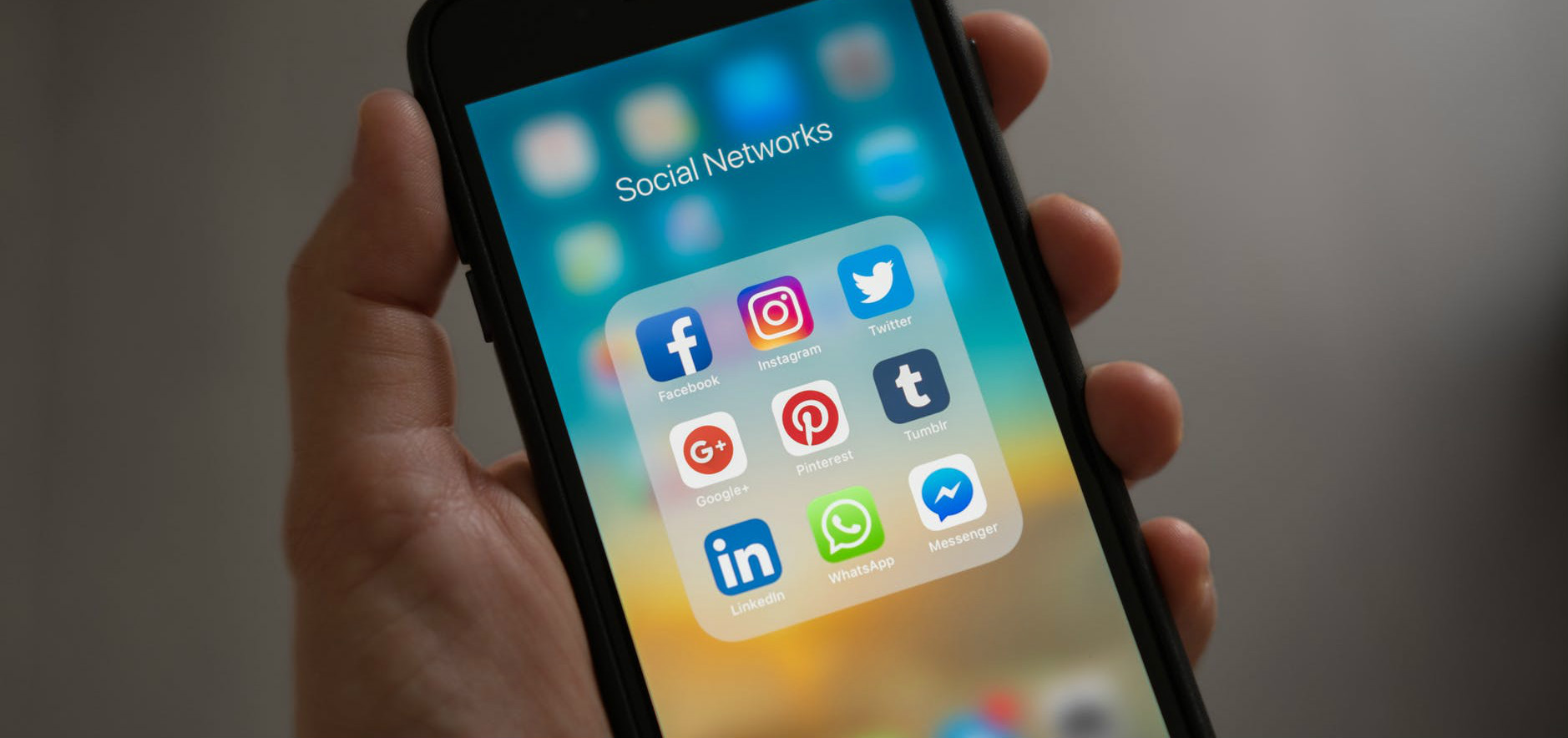How to pair offline and online marketing to gain new clients
No matter how ‘digital’ and ‘connected’ we become through the internet of things, there will always be a place for offline marketing.
Quick Links
Online marketing itself is still based heavily on relationship building and networking, from personal branding, to content marketing, and especially social media. The aim is to build a relationship with your target audience.
Similarly to offline marketing and networking.
The aim of networking is to build relationships with contacts that can be mutually beneficial. Plus, although nowaday we’re all happy to digitally hand over cash to someone over the internet, we’d all prefer to meet them in person in an ideal world before transacting.
Which is why at my agency, Brick Digital, we’ve been playing with the idea of combining ‘old-school’ offline marketing, with new-school digital marketing (SEO, Remarketing, PPC) to build great relationships and gain new clients.
So here’s a brief summary of our strategy and how you could pull it off too in your own business…
Who could this work for?
First off, it’s worth mentioning what kinds of businesses could benefit from this sort of strategy.
If you’re a B2B service provider, preferably in the digital marketing services world (SEO, Social, PPC), then we’ve can confirm this does work. However, if used properly this can also be a great tool for any other B2B business.
What’s the aim?
As mentioned above, it’s all about relationship building. Lead generation sounds a bit cold, but that’s what we all want ideally. New leads.
So that’s the core aim as always. But a bi-product of this is also the chance to build a relationship and also show off your skills to a new decision maker who could become a brand advocate for your business without becoming a client.
How can you do it?
This is an overall strategy outline of how you could use effective online marketing like SEO, Social media, and PPC to land new clients with the focus being on digital agencies like ourselves.
We’re going to miss out the whole target profile as you should already have these target clients in mind.
Step One – Decide on your offline channel/s
My personal favourite is an old-fashioned letter. Not going as old-school as hand written, but a properly crafted, paper, tangible letter.
Other methods can include leafleting, or plain door knocking, although they’re much less likely to strike a good relationship.
The reason I like letters is because in this age of digital, everyone’s writing cold emails, cold calling/knocking in saturated, and leafleting is edging on extinction. Which makes receiving an actual letter (not a mailshot) that bit more special.
There are many ways to pair online and offline marketing efforts in order to maximize the reach and efficacy of your campaigns. One such method is to generate offline leads and funnel them onto your online platform. This can be done in a variety of ways, but one example is to put a bar code on an inflatable or tent at an event in which you are taking part. For instance, if you are participating in a Christmas-themed marketing event where all businesses are represented, you could put your bar code on a Christmas blow-up snow globe that will be designed to perfectly represent your brand spiced with a Christmas theme. People will enjoy being inside the festive globe and scanning the bar code will take them directly to your website. This is a great way to generate leads and increase traffic to your site.
(Phone calling is a part of the offline activities but I’ll get to that later.)
Step Two – Decide on your online channels
Before you go about creating your offline marketing collateral you need to have a clear plan for your online strategy.
Are you going to send your new contact/lead to your website, a YouTube video, or maybe your LinkedIn account? Then what will you do next to keep them engaged with you and your brand.

No matter how ‘digital’ and ‘connected’ we become through the internet of things, there will always be a place for offline marketing
Online marketing itself is still based heavily on relationship building and networking, from personal branding, to content marketing, and especially social media. The aim is to build a relationship with your target audience.
Similarly to offline marketing and networking.
The aim of networking is to build relationships with contacts that can be mutually beneficial. Plus, although nowaday we’re all happy to digitally hand over cash to someone over the internet, we’d all prefer to meet them in person in an ideal world before transacting.
Which is why at my agency, Brick Digital, we’ve been playing with the idea of combining ‘old-school’ offline marketing, with new-school digital marketing (SEO, Remarketing, PPC) to build great relationships and gain new clients.
So here’s a brief summary of our strategy and how you could pull it off too in your own business…
Who could this work for?
First off, it’s worth mentioning what kinds of businesses could benefit from this sort of strategy.
If you’re a B2B service provider, preferably in the digital marketing services world (SEO, Social, PPC), then we’ve can confirm this does work. However, if used properly this can also be a great tool for any other B2B business.
What’s the aim?
As mentioned above, it’s all about relationship building. Lead generation sounds a bit cold, but that’s what we all want ideally. New leads.
So that’s the core aim as always. But a bi-product of this is also the chance to build a relationship and also show off your skills to a new decision maker who could become a brand advocate for your business without becoming a client.
How can you do it?
This is an overall strategy outline of how you could use effective online marketing like SEO, Social media, and PPC to land new clients with the focus being on digital agencies like ourselves.
We’re going to miss out the whole target profile as you should already have these target clients in mind.
Step One – Decide on your offline channel/s
My personal favourite is an old-fashioned letter. Not going as old-school as hand written, but a properly crafted, paper, tangible letter.
Other methods can include leafleting, or plain door knocking, although they’re much less likely to strike a good relationship.
The reason I like letters is because in this age of digital, everyone’s writing cold emails, cold calling/knocking in saturated, and leafleting is edging on extinction. Which makes receiving an actual letter (not a mailshot) that bit more special.
(Phone calling is a part of the offline activities but I’ll get to that later.)
Step Two – Decide on your online channels
Before you go about creating your offline marketing collateral you need to have a clear plan for your online strategy.
Are you going to send your new contact/lead to your website, a YouTube video, or maybe your LinkedIn account? Then what will you do next to keep them engaged with you and your brand.

Don’t make the letter a sales pitch, use it more as an introduction from you as the director or business dev. Manager. Write personally from yourself and briefly explain what you do as a business.
Then deliver the CTA. Not your usual ‘Contact us’ or ‘Schedule a meeting’ but something more interactive. Ask them to search for your services on Google if you also want to SEO clients like us.
Or maybe just let them know about a recent blog/video you created that might be useful to them, and tell them how to see it online.
Keeping this letter as personal as possible is key to the success.
Step Four – Nailing your online marketing
After I mentioned above about picking your online channels you might think you’re ready to go build some retargeting banners and social ads to reach your prospect again.
But you need to stay consistent. Bear in mind the approach you took at first.
If the client took action based on your letter then it means they were drawn to the fact that you wrote to them, and also the approach you took in your wording. So why go and hit them with a hard sell as soon as they enter your online funnel?
Keeping things as personal as possible again is key here. Run ads that give them value and help them to connect these ads to you and your brand by including author names in blog posts or videos.
The beauty of doing it this way is there really aren’t many others willing to put in this leg work and prefer to look at lead generation as a system, without building real relationships.
Step Five – Going back offline
Once I’ve sent my letters out.
Built my online marketing funnel.
And left it around a week.
I pick up the phone. Ideally I have the direct number of the prospect I wrote to, but it will also be easier to get past gatekeepers on the phone if the prospect is already familiar with you and your business.
When I get through to the person I continue to build the relationship, not selling. Just checking up to see if they liked the content you pointed them to, or if they reached your website when searching for you.
This won’t be straightforward with all prospects as obviously you’ll have some who never took any action, and some who try to shut you down straight away.
But generally if you’ve done it properly the person should feel an affiliation with you since it’s not the first time they’ve heard from you. And if every interaction both offline and online has been consistently good then the likelihood of them responding coldly is a lot lower.
You’ve built a relationship with this previously cold prospect on a more personal level than is possible with online marketing alone.

Bonus Step
Here is where your own sales process comes into play.
Although as a perfect follow up to this call I advise you arrange a coffee meeting or something informal to give you a chance to build the relationship.
At the end of the day, they already know what you do, and as long as you pre-qualify your prospects before sending out a letter then you’ll have confidence that they need your service.
When doesn’t this work?
The most obvious scenario that this sort of offline-online hybrid marketing approach wouldn’t work is if you don’t qualify your prospects properly.
This is no doubt a time consuming task so you don’t want to spend time building a relationship in this way if the prospect could never afford your services.
Also, if you aren’t able to reach the decision maker with your initial offline activity, like the letter we spoke about. Then don’t go ahead.
Any company with a mailing list can send out generic promo material to office addresses. The aim here is to be unique in your approach, which you’ll find hard to do if you appear to be ‘yet another agency’.
Author Bio
 Lorenzo Luiso is the founder of Brick Digital, a PPC and SEO agency in Hertfordshire. Specialising in growing businesses through search engine marketing and online reputation management.
Lorenzo Luiso is the founder of Brick Digital, a PPC and SEO agency in Hertfordshire. Specialising in growing businesses through search engine marketing and online reputation management.
With an extensive history in online business, and an innovative approach to internet marketing Lorenzo shares his thoughts, tactics, and advice online through his SEO blog here.
Why WooCommerce is the Best Choice for Your Online Store?
WooCommerce stands out as a top option for anyone looking to build an online store. This platform…
0 Comments8 Minutes
How to Use AI-Powered SEO Tools for WordPress eCommerce
SEO is a critical factor in the success of any e-commerce WordPress store. As competition…
0 Comments11 Minutes
Why Short-Form Videos Are the Future of Content Marketing
Your Instagram customers spend over 50% of their time watching short-form videos and reels. Rather…
0 Comments12 Minutes
The Role of Digital Marketing in Business Growth
Online marketing touches every aspect of a business, whether it is initiating the idea or for an…
0 Comments3 Minutes
AI Meets Authenticity: Balancing Automation and Human Touch in Content Marketing
Is your brand starting to sound like a robot? In a world where algorithms write faster than any…
0 Comments8 Minutes
Essential Tools for Enhancing Web Design and UX Hosting
Have you ever visited a website that felt slow, clunky, or confusing? A website that is poorly…
0 Comments11 Minutes
How a Mini Cart Transformed My Store’s Shopping Experience
Okay, real talk—running an online store is hard. You think you’ve got everything figured out, you…
0 Comments9 Minutes
Balancing Your Security Initiatives With Industry Compliance Requirements
Managing a business today comes with a number of daily battles that need to be fought. Resources…
0 Comments11 Minutes







